Medical expert of the article
New publications
Preparations
Ointments for arthrosis
Last reviewed: 23.04.2024

All iLive content is medically reviewed or fact checked to ensure as much factual accuracy as possible.
We have strict sourcing guidelines and only link to reputable media sites, academic research institutions and, whenever possible, medically peer reviewed studies. Note that the numbers in parentheses ([1], [2], etc.) are clickable links to these studies.
If you feel that any of our content is inaccurate, out-of-date, or otherwise questionable, please select it and press Ctrl + Enter.
Arthrosis is considered a complex and severe rheumatological disease, which is not easy to treat. To get rid of this disease, the patient is recommended complex therapy, which necessarily includes a variety of ointments. With their help you can quickly cope with the main symptoms of pathology.
Indications for the use of ointments for arthrosis
Various drugs that are used to treat this disease are recommended by doctors at different stages of the disease. Patients can use drugs that are sold in pharmacies, as well as all kinds of ointments and pastes from medicinal herbs and other components.
Of course, ointments do not help completely cure arthrosis, but thanks to them you can easily accelerate recovery, prevent exacerbation. What are the therapeutic properties of ointments from arthrosis?
- Removal of inflammation.
- Relieving pain.
- Elimination of muscular spasm.
- Blood circulation in the tissues located around the affected joint is improving.
- Warm up.
- Nutrition of cartilage tissues comes back to normal.
- They differ in antimicrobial effect.
Pharmacodynamics and pharmacokinetics
Consider the pharmacodynamics of ointments from osteoarthritis on the example of the popular drug "Hondroksid."
This agent stimulates the regeneration of cartilage tissue. It is distinguished by a combined action: it helps to relieve inflammation, slow the progression of the disease, reduce pain. The components that make up the drug increase the effect of chondroitin. Thanks to this ointment, the patient can significantly reduce the dose of non-steroidal anti-inflammatory drugs. Affected joints become more mobile. The processes of degeneration are inhibited.
Ointment Chondroxide quickly and easily absorbed into the skin. Due to the fact that the drug includes dimethyl sulfoxide, chondroitin sulfate penetrates into the affected joint much faster. Of the cartilaginous tissue the main component of the drug is excreted in two phases. The first, rapid phase occurs within one hour after applying the ointment to the skin. The second lasts about five hours.
Names of ointments for arthrosis
Today in pharmacies there are a variety of names for ointments for osteoarthritis. Conditionally all of them are divided into two large groups:
- Preparations for vasodilation and warming - help improve blood circulation in the area that has been affected, reduce pain, strengthen the work of other therapeutic agents, normalize nutrition in tissues.
- Analgesics and anti-inflammatory drugs - reduce or completely eliminate inflammation, reduce puffiness, reduce temperature, improve the mobility of the damaged joint.
It is worth noting that anti-inflammatory ointments with arthrosis have a low penetrating ability (up to 7% of the active substances of the drug), so they should be used only at the first stages of the disease or during an exacerbation. To obtain a long-term effect, ointments with a warming effect are usually used.
The most popular ointments for arthrosis to date are:
- Vishnevsky ointment".
- Traumeel Ointment.
- Heparin ointment.
More information about these tools you can find out below.
Ointment "Vishnevsky" with arthrosis
The composition of this drug includes such active substances: tar, xeroform (antiseptic), castor oil. It is thanks to them that the ointment has its own unique properties. First, the product is characterized by a local-irritant and warming effect, which creates a specific film on the skin, reducing heat transfer and irritating nerve endings. This increases the inflammatory process, so the pustules ripen faster and pass.
Ointment Vishnevsky often used to treat arthrosis, as well as boils, ulcers, burns (especially infected), periculitis, colpitis (chronic form), ulcers, abscesses.
As a rule, this remedy is applied under compresses or bandages, which should be changed at least three to five times a day.
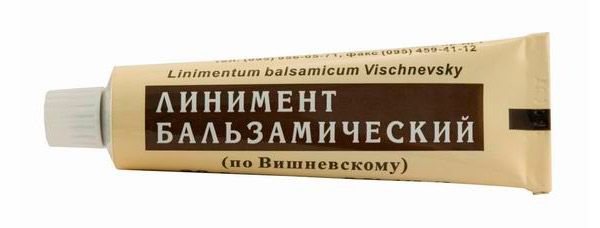
Ointment is contraindicated in a number of cases: with intolerance of its components, inflammation, when it is necessary to avoid suppuration, during active cleansing of wounds, with contaminated diseases.
Heparin ointment
This drug has an antithrombotic effect. Active active components of the ointment are: heparin sodium, benzilnicotinate, benzocaine. The agent acts on the inflamed area, gradually releasing the heparin.
Apply the drug only to the affected joints with a thin layer. After that, rub gently with massage movements. It is applied up to three times a day, until all the symptoms of arthrosis disappear. Usually, therapy takes three to seven days.
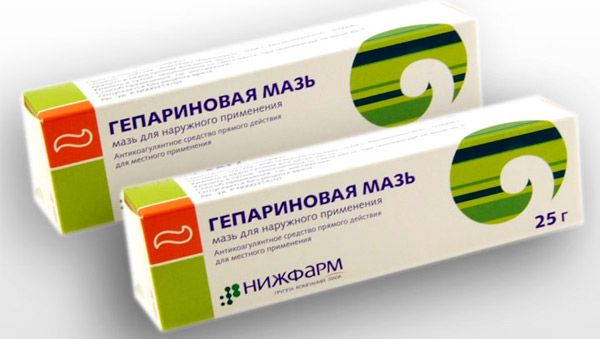
The main negative effects when using the ointment are: allergy, rash, edema. It is not recommended for use in ulcerative necrotic processes, intolerance of components, skin surface disorders.
Traumeel Ointment
This homeopathic remedy is widely used in the treatment of arthrosis. Active active components of the ointment are: arnica montana, calendula, echinacea, hamamelis, hamomilla, symphytum, Bellis pernis, belladonna, hypericum, aconitum, milllefolium.
The drug can be used from three years. Apply in small amounts only to affected areas two to three times a day. Rub with light movements. Can be applied under a gauze bandage. The course of therapy is prescribed by a doctor individually.
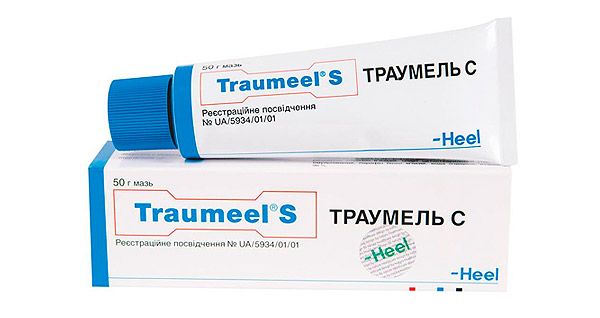
In some cases, Traumeel's ointment can lead to various allergic reactions, in which it should be stopped. The drug is contraindicated if you have been diagnosed with: leukemia, tuberculosis, collagenosis, autoimmune diseases, multiple sclerosis, HIV, intolerance of components.
Ointment from Valentina Seymova from arthrosis of the knees
This ointment must be prepared by yourself. The main components are: natural beeswax, vegetable oil and yolk. For cooking, you need to find a clean enamel bowl, pour oil into it, add beeswax (a small piece in the form of a matchbox) and put on fire. You have to wait until the wax completely melts.
While melting the wax, cook a hard-boiled egg and remove from it half of the yolk. Crush the yolk with a fork until you get a uniform mass. Gradually throw in the butter with wax crushed yolk. Stir. After this, strain the product through gauze and store in a cool place.
Lubricate joints that have been affected by arthrosis, under gauze for the night. Therapy is performed until the main symptoms disappear.
Ointments for arthrosis of the knee joint
To cure arthrosis of the knee joint (gonoarthrosis) it is recommended to use the following ointments.
Finalgel. It is a non-steroidal anti-inflammatory drug whose active ingredient is piroxicam. The drug has a good analgesic and anti-inflammatory effect. It is applied to the affected joints with a small dose (approximately like a hazelnut) three times in 24 hours. The course of therapy is individual and depends on the severity of the disease.

Very rarely, when using this drug in patients diagnosed with shortness of breath, nausea, severe headaches, allergies. Ointment can not be used in kidney disease, in childhood (14 years), in the first trimester of pregnancy, intolerance of components.
Finalgon. This drug is characterized by analgesic and irritating effect. Active active ingredients of the ointment are: nikoboksil and nonivamid.
Before treatment, the individual response of the patient to the components of the agent is evaluated. To do this, apply a thin layer of ointment on a small area of the skin. This is done in order to find out what amount of the drug is necessary for the patient for a sufficient warming effect.
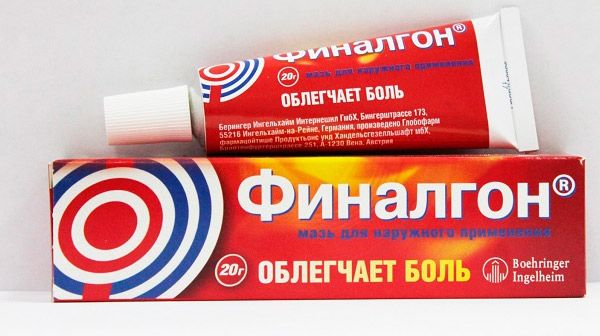
A special applicator is attached to the ointment. For the application, no more than 0.5 mm of the material is used, and rubbed with light movements. Use up to three times a day. With prolonged therapy, the effect of the ointment can decrease, so the doctor can increase the dose.
Among the side effects of the ointment are isolated: paresthesia, anaphylactic reaction, burning on the skin, shortness of breath, cough, allergy. Ointment Finalgon is not recommended for intolerance of its main components, children under 12 years.
Ointment for arthrosis of the ankle joint
For the treatment of arthrosis of the ankle joint, ointments are used, in which non-steroidal and steroid components descend. The most effective means for today is considered "Dip-Relief".
It is a non-steroidal anti-inflammatory drug whose active ingredients are levomenthol and ibuprofen.
Applied up to four times a day in small amounts over the very focus of inflammation, and lightly rubbed into the skin. If the hands were not the object of treatment, after using the ointment, they should be thoroughly washed. It is not recommended to use the drug for more than ten days.
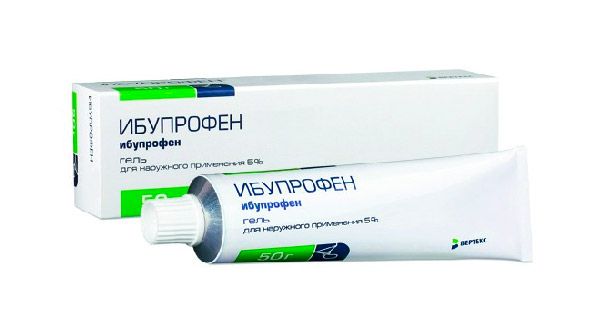
There were no significant side effects from the use of ointment. In some cases, allergic reactions to the skin may appear. Do not use the product for breastfeeding, pregnancy, breach of skin integrity, bronchial asthma, intolerance to components, up to 14 years.
Ointment for arthrosis of the foot
In osteoporosis, a variety of ointments are used, which help to overcome the inflammatory process and improve the joint condition. The most popular drug in this field is "Viprosal B".
Ointment is analgesic and irritating. It is based on the action of the active components: camphor, salicylic acid, turpentine, turpentine and venom of an ordinary viper.
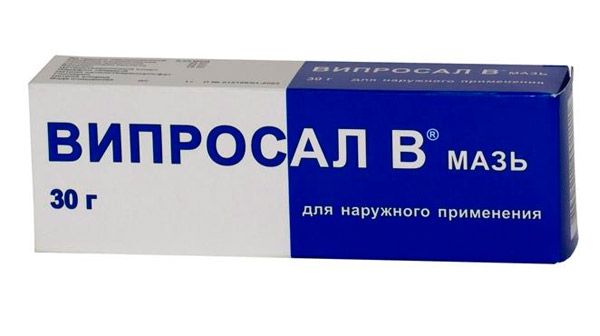
Apply only to painful areas once a day in a small dose (approximately, one teaspoonful). If the pain is too strong, you can use it twice a day until the pain disappears.
The average course of therapy is ten days. If during this time your condition has not improved, you need to see a doctor.
In single cases, when Viprosal B is used, allergic reactions appear in patients. The drug is not recommended for use in active tuberculosis skin, skin infections, fever, liver and kidney failure, during pregnancy and lactation, as well as with intolerance of its components.
Ointments for arthrosis of the hip joint
To improve the patient's condition with arthrosis of the hip joint, doctors recommend using homeopathic remedies. The most popular among them is Dimexid ointment.
This drug is analgesic and anti-inflammatory. The main component is dimethylsulfoxide. Can be used from the age of 12. Apply should be up to two times a day for maximum effect. The therapy lasts up to two weeks. If before this time of relief has not come, you need to see a doctor.
Among the main side effects of Dimexide use are: contact dermatitis, bad breath, allergy, skin pigmentation, burning and dryness. Do not use the drug for severe kidney and liver damage, angina pectoris, myocardial infarction, stroke, atherosclerosis, cataract, glaucoma, up to 12 years, during lactation and pregnancy.
Ointment for arthrosis of the hands
Arthrosis of the hands uses a variety of ointments. The most effective among them is Diclofenac.
This is a non-steroidal anti-inflammatory agent that is based on the action of a phenylacetic acid derivative. It differs in anti-inflammatory, antipyretic, analgesic effect.
It is used in a small dose (up to 4 g), applying to affected areas three to four times a day. Duration is established by the attending physician and depends on the severity of the disease.
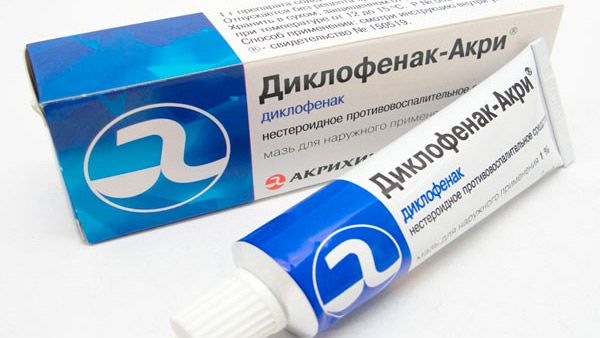
Diclofenac ointment has quite a lot of side effects, which you should know about before applying it. Often, patients experience allergic reactions, vomiting and nausea, discomfort and pain in the abdomen, diarrhea or constipation, headaches and dizziness, depression, sleep disorders, anemia, impaired renal function, hair loss.
Do not use the drug with intolerance of the components of the drug, erosive-ulcerative lesions of the gastrointestinal tract, hematopoiesis.
Ointment for arthrosis of fingers
For arthrosis of the fingers, non-steroidal anti-inflammatory drugs are most often used. In particular, the ointment Dolgit was widely used .
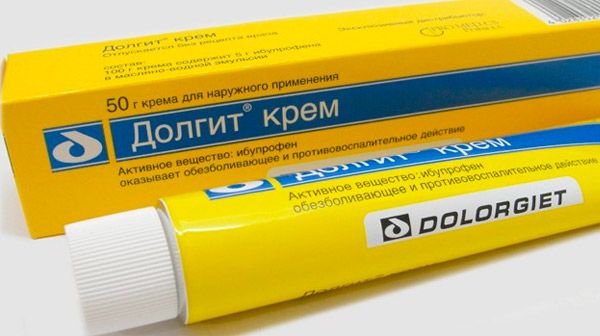
Active active substance of the drug is ibuprofen, due to which the ointment has a good analgesic effect. It also has an anti-inflammatory effect.
On the affected skin ointment is applied in a thin layer, and then rubbed with light massage movements until the drug enters the skin completely. It is used up to four times a day. Can be used under bandages. The duration of treatment depends on the severity of the disease.
The main side effects of using the ointment are: allergies, bronchospasm, rashes, skin edema, tingling sensation. Do not apply the drug to dying wounds, eczema, abrasions and infectious wounds, during pregnancy and during lactation, at an early age (up to a year).
Ointment from arthrosis of the shoulder joint
Treatment of arthrosis of the shoulder joint begins with the elimination of inflammation and pain relief. To do this, apply various ointments, among which particular attention should be stopped on the "Nimesulide" ointment .
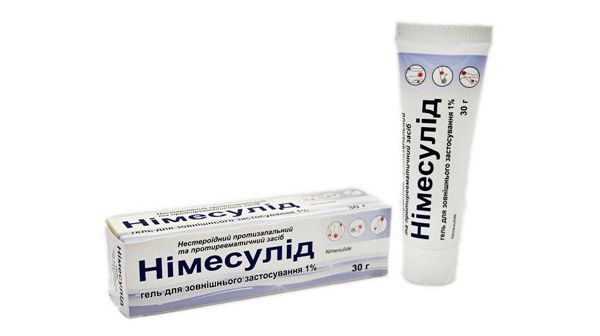
This is a non-steroidal anti-inflammatory drug that is based on the action of the sulfonylid group (nimesulide) derivative. Dosage for adults is at least 100 mg twice a day. Children are recommended to use up to 1.5 mg two or three times a day.
In some cases, the ointment can lead to side effects: heartburn, nausea, abdominal pain, headache, dizziness, allergies, oliguria.
You can not use ointment with stomach ulcer and duodenal ulcer, acute bleeding in the digestive tract, kidney and liver failure, during pregnancy and lactation.
Anesthetic ointments for arthrosis
The main components of analgesic ointments for arthrosis are those substances with which you can quickly remove inflammation: tungfen, diclofenac, indomethacin, ketoprofen, nimesulide, ibuprofen, dimethylsulfoxide. The doctor himself appoints the duration, dosage and frequency of the drug, depending on the severity of the disease and the individual characteristics of the patient's body.
The list of the main ointments for anesthesia for arthrosis includes:
- Ointment "Diclofenac", which is based on the substance diclofenac (non-steroidal anti-inflammatory drug).
- Ointment "Fastum", which is based on the action of the active substance ketoprofen.
- Ointment "Indomethacin" is a non-steroidal anti-inflammatory drug with indomethacin.
- "Nyz" ointment, which is based on the action of the active substance nimesulide.
- "Dolobene" ointment, which has an anti-inflammatory effect, is based on the substance dimethylsulfoxide.
- Ointment "Dolgit" based on ibuprofen.
It is important to remember that all these drugs can not be used for longer than described in the instructions or prescribed by the attending physician. Active active ingredients of these ointments can also lead to undesirable negative effects if used for too long.
 [12], [13], [14], [15], [16], [17]
[12], [13], [14], [15], [16], [17]
Warming ointments for arthrosis
Such ointments have a different effect, which depends on those active components that are included in their composition. In warming ointments with arthrosis, you can find snake venoms, bee venom, extracts of medicinal plants.
The list of the most popular ointments with a warming effect includes such preparations:
- Ointment "Apisatron", which is based on the action of bee venom.
- Ointment "Voltaren" with snake venom.
- Ointment "Espol", which contains an extract of red pepper.
- Ointment "Menovazin".
- Ointment "Gevkamen", which is based on the action of essential oil of cloves, eucalyptus, as well as menthol.
- Ointment "Niklofeks" with salicylate, capsaicin and ethyl nikonatom.
Such ointments can not be used for open wounds and abrasions, as well as for allergies to certain components that are part of the preparations. They also should not be applied during a strong inflammatory process.
List of ointments for osteoarthritis with chondroitin
Among the most popular ointments for osteoarthritis with chondroitin is:
- Chondroitin-Acos is a remedy that helps improve the metabolism in cartilaginous tissues. It is based on the action of the active substance chondroitin sulfate. Apply should be up to three times a day on the affected joints. Rub the product for about two minutes. The course of therapy can last from two weeks to two months. May cause an allergic reaction. Do not use for acute inflammation in the wounds, tissue necrosis, intolerance of the components.
- Arthrin - this drug affects the exchange of phosphorus and calcium in the cartilage tissues. It is used up to two times a day for not more than two weeks. If relief does not come, you need to see a doctor. May cause allergies. The drug is not recommended for use with intolerance components, thrombophlebitis, a tendency to bleeding, during pregnancy and lactation.
- Chondroxide - a remedy improves the regeneration of cartilaginous tissues, and also reduces inflammation. Relieves pain, swelling of the joint, stimulate its recovery. Apply up to three times a day over the affected joint. To rub it is necessary up to two minutes, while the ointment completely will not be absorbed. The duration of therapy is two weeks. May cause an allergic reaction. Do not use the drug with intolerance to its components.
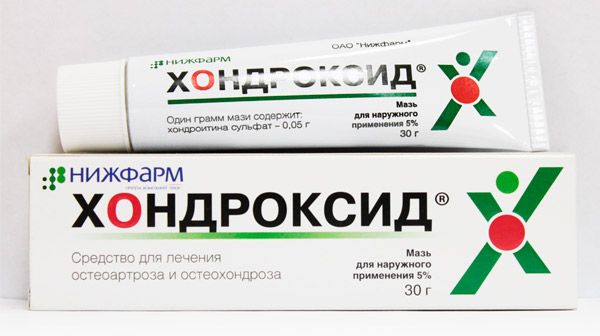
Dosing and Administration
Apply ointments for arthrosis only to the affected areas of the skin with a thin layer. Sometimes they need to be rubbed to improve efficiency. Therapy can last from ten days to two months, depending on the severity of the disease and individual characteristics.
Use of ointments for arthrosis during pregnancy
Most ointments from arthrosis can be taken during pregnancy with special care and only after a complete examination of the doctor.
Contraindications to the use and side effects of ointments for arthrosis
Before using ointments for arthrosis, you should carefully read the instructions, which describe the contraindications for use. As a rule, all such drugs can not be used for intolerance of their active substances, as well as in a number of other cases (renal and hepatic insufficiency, abrasions, tissue necrosis, gastrointestinal ulcer).
Most often when using ointments from arthrosis, the following side effects are revealed:
- Allergic reactions (rash, itching, burning, contact dermatitis).
- Headaches and dizziness.
- Disorders of the stomach, indigestion.
It is necessary to carefully study the instructions in order to be prepared for possible side effects.
Storage conditions and shelf life
Ointments for arthrosis should be stored out of the reach of children, which is completely protected from light. Thus the temperature of air should be from 2 to 20 degrees of heat.
Usually, the shelf life of ointments from osteoarthritis is three years. Remember that you can not use the drug after this period has expired.
Attention!
To simplify the perception of information, this instruction for use of the drug "Ointments for arthrosis" translated and presented in a special form on the basis of the official instructions for medical use of the drug. Before use read the annotation that came directly to medicines.
Description provided for informational purposes and is not a guide to self-healing. The need for this drug, the purpose of the treatment regimen, methods and dose of the drug is determined solely by the attending physician. Self-medication is dangerous for your health.

